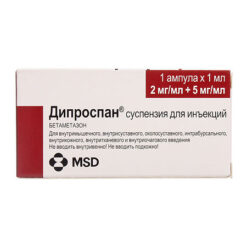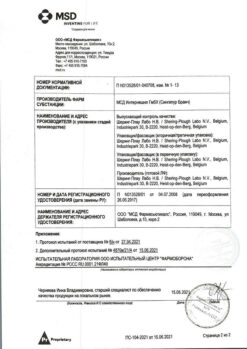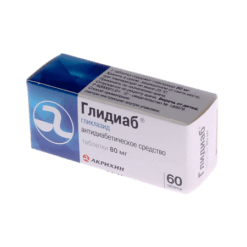No products in the cart.
Tugeo SoloStar, 300 units/ml 1.5 ml cartridges in SoloStar syringe pens 5 pcs
€1.00
Out of stock
(E-mail when Stock is available)
Description
Type 2 Diabetes, Type 1 Diabetes
Diabetes mellitus in adults requiring insulin treatment.
Indications
Indications
Diabetes mellitus in adults requiring treatment with insulin.
Pharmacological effect
Pharmacological effect
Hypoglycemic agent – long-acting insulin analogue
Special instructions
Special instructions
Patients must have skills in self-control of diabetes mellitus, including monitoring blood glucose concentrations, as well as adhere to the correct technique for performing subcutaneous injections and be able to stop the development of hypoglycemia and hyperglycemia. Insulin therapy requires constant vigilance regarding the possibility of developing hyperglycemia or hypoglycemia.
In case of insufficient control of the concentration of glucose in the blood, as well as in the presence of a tendency to develop hypo- or hyperglycemia, before proceeding with the correction of the dosage regimen, you should check the accuracy of the prescribed treatment regimen, compliance with the instructions regarding the drug administration sites, the correct technique of subcutaneous injections and handling of the SoloStar syringe pen, and also take into account the possibility of all other factors that can cause such a condition.
Active ingredient
Active ingredient
Insulin glargine
Composition
Composition
1 ml of solution contains:
active substance:
insulin glargine 300 units (10.91 mg);
excipients:
metacresol (m-cresol) – 2.70 mg,
zinc chloride – 0.19 mg (corresponds to 0.09 mg zinc), glycerol (85%) – 20 mg,
sodium hydroxide – up to pH 4.0,
hydrochloric acid – up to pH 4.0,
water for injection – up to 1.0 ml.
Contraindications
Contraindications
hypersensitivity to insulin glargine or any of the excipients of the drug;
age under 18 years (due to the lack of clinical data confirming the effectiveness and safety of the drug in children and adolescents).
Side Effects
Side Effects
The following adverse reactions (HPs) were observed during clinical studies conducted with Toujeo SoloStar® and during clinical use of insulin glargine 100 U/ml.
These HP are presented by organ system (in accordance with the classification of the Medical Dictionary of Regulatory Activities (MedDRA)) in accordance with the following gradations of the frequency of their occurrence recommended by the World Health Organization (WHO): very common (≥ 10%); often (≥ 1%; < 10%); uncommon (≥ 0.1%; < 1%); rarely (≥0.01%; <0.1%); very rare (<0.01%), frequency unknown (it is not possible to determine the incidence of HP from the available data).
Metabolic and nutritional disorders
Hypoglycemia
Hypoglycemia, the most common adverse reaction of insulin therapy, can occur when the dose of insulin is too high compared to the need.
As with other insulins, episodes of severe hypoglycemia, especially repeated episodes, can lead to neurological impairment. Episodes of prolonged and severe hypoglycemia can be life-threatening for patients.
In many patients, signs and symptoms of neuroglycopenia (feeling tired, inappropriate fatigue or weakness, decreased ability to concentrate, drowsiness, visual disturbances, headache, nausea, confusion or loss of consciousness, seizures) are preceded by signs of adrenergic counterregulation (activation of the sympathetic-adrenal system in response to hypoglycemia): hunger, irritability, nervous agitation or tremor, restlessness, pallor of the skin, “cold” sweat, tachycardia, pronounced palpitations. Typically, the faster hypoglycemia develops and the more severe it is, the more severe the symptoms of adrenergic counterregulation are.
Visual disorders
Significant improvements in glycemic control may cause temporary impairment of vision due to temporary disturbances in the turgor and refractive index of the lens of the eye.
Long-term improvement in glycemic control reduces the risk of progression of diabetic retinopathy. However, as with any insulin regimen, intensification of insulin therapy with a sharp improvement in glycemic control may be associated with a temporary worsening of diabetic retinopathy.
In patients with proliferative retinopathy, especially those not receiving photocoagulation treatment, episodes of severe hypoglycemia may lead to transient vision loss.
Skin and subcutaneous tissue disorders
As with treatment with any other insulin preparations, lipodystrophy may develop at the injection site, which can slow down the local absorption of insulin. When using insulin regimens that included insulin glargine, lipodystrophy was observed in 1-2% of patients, and lipoatrophy was observed infrequently. Constantly changing injection sites within areas of the body recommended for subcutaneous insulin administration may help reduce the severity of this reaction or prevent its development.
Musculoskeletal and connective tissue disorders
Very rare: myalgia.
General and administration site disorders
Local allergic reactions at the injection site
As with all insulin therapy, such reactions include skin redness, pain, itching, hives, rash, swelling and inflammation. In clinical studies conducted with Toujeo SoloStar® in adult patients, the incidence of all injection site reactions in patients treated with Toujeo SoloStar® (2.5%) was similar to that in patients treated with insulin glargine 100 U/mL (2.8%). Most minor insulin injection site reactions usually resolve within a few days to a few weeks.
Immune system disorders
Systemic allergic reactions
Immediate allergic reactions to insulin are rare. Such reactions to insulin (including insulin glargine) or excipients may, for example, be accompanied by generalized skin reactions, angioedema (Quincke’s edema), bronchospasm, decreased blood pressure and shock and pose a threat to the patient’s life.
Other reactions
The use of insulin can cause the formation of antibodies to it. In clinical studies comparing Tujeo SoloStar® and insulin glargine 100 U/ml, the formation of antibodies to insulin in both treatment groups was observed with the same frequency.
As with other insulins, in rare cases, the presence of such insulin antibodies may require changes in the insulin dose to eliminate the tendency to develop hypoglycemia or hyperglycemia.
In rare cases, insulin may cause sodium retention and edema, especially when previously poor metabolic control is improved by intensifying insulin therapy.
Children
The safety profile for children and adolescents under 18 years of age has not yet been established.
Interaction
Interaction
A number of drugs affect glucose metabolism, as a result of which, when used simultaneously with insulins, adjustment of the insulin dose and especially careful monitoring may be required.
Medicines that may increase the hypoglycemic effect of insulin and the tendency to develop hypoglycemia
Oral hypoglycemic agents, angiotensin-converting enzyme inhibitors (ACEIs), salicylates, disopyramide; fibrates, fluoxetine, monoamine oxidase inhibitors (MAOIs), pentoxifylline, propoxyphene, sulfonamide antibiotics.
Concomitant use of these drugs with insulin glargine may require adjustment of the insulin dose.
Medicines that may reduce the hypoglycemic effect of insulin
Glucocorticosteroids, danazol, diazoxide, diuretics, sympathomimetics (such as adrenaline, salbutamol, terbutaline); glucagon, isoniazid, phenothiazine derivatives, growth hormone, thyroid hormones, estrogens and progestins (for example, in hormonal contraceptives), protease inhibitors and atypical antipsychotics (for example, olanzapine and clozapine).
Concomitant use of these drugs with insulin glargine may require adjustment of the insulin dose.
Beta-blockers, clonidine, lithium salts and ethanol – it is possible to either enhance or weaken the hypoglycemic effect of insulin. Pentamidine, when combined with insulin, can cause hypoglycemia, which sometimes gives way to hyperglycemia.
Sympatholytic drugs – under the influence of sympathomimetic drugs, such as beta-blockers, clonidine, guanethidine and reserpine, signs of adrenergic counterregulation (activation of the sympathetic nervous system in response to the development of hypoglycemia) may be reduced or absent.
Interaction with pioglitazone
When pioglitazone is used in combination with insulin, cases of heart failure have been reported, especially in patients at risk of developing heart failure (see section “Special Instructions”). If cardiac symptoms appear or worsen, use of pioglitazone should be discontinued.
Overdose
Overdose
Symptoms
Insulin overdose (excess insulin relative to food intake, energy expenditure, or both) can lead to severe and sometimes long-term and life-threatening hypoglycemia in the patient.
Treatment
Episodes of moderate hypoglycemia are usually controlled by ingestion of rapidly digestible carbohydrates. It may be necessary to change the drug dosage regimen, diet, or physical activity.
Episodes of more severe hypoglycemia, manifested by coma, seizures, or neurological disorders, can be treated with intramuscular or subcutaneous administration of glucagon or intravenous administration of a concentrated solution of dextrose (glucose). Long-term carbohydrate intake and specialist supervision may be required, since after visible clinical improvement, hypoglycemia may recur.
Manufacturer
Manufacturer
Sanofi-Aventis Deutschland GmbH, Germany
Additional information
| Manufacturer | Sanofi-Aventis Deutschland GmbH, Germany |
|---|---|
| Medication form | solution |
| Brand | Sanofi-Aventis Deutschland GmbH |
Other forms…
Related products
Buy Tugeo SoloStar, 300 units/ml 1.5 ml cartridges in SoloStar syringe pens 5 pcs with delivery to USA, UK, Europe and over 120 other countries.















